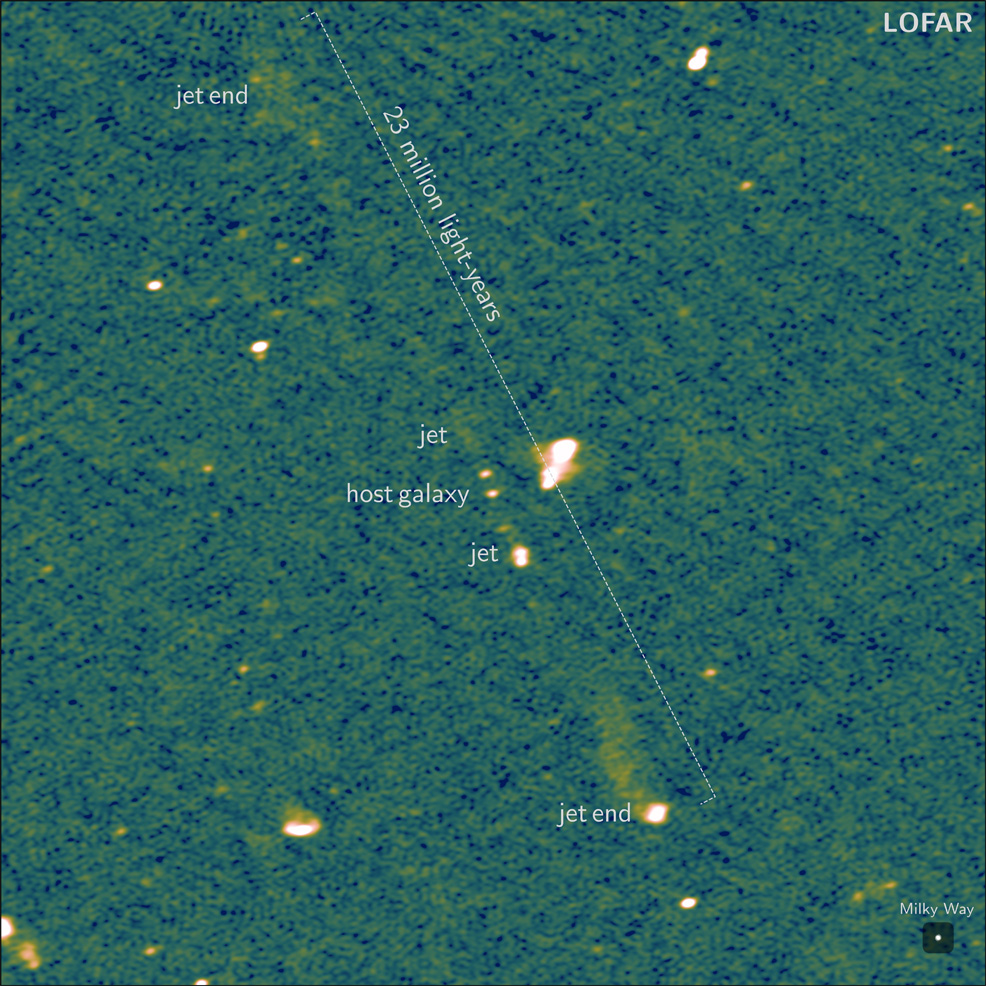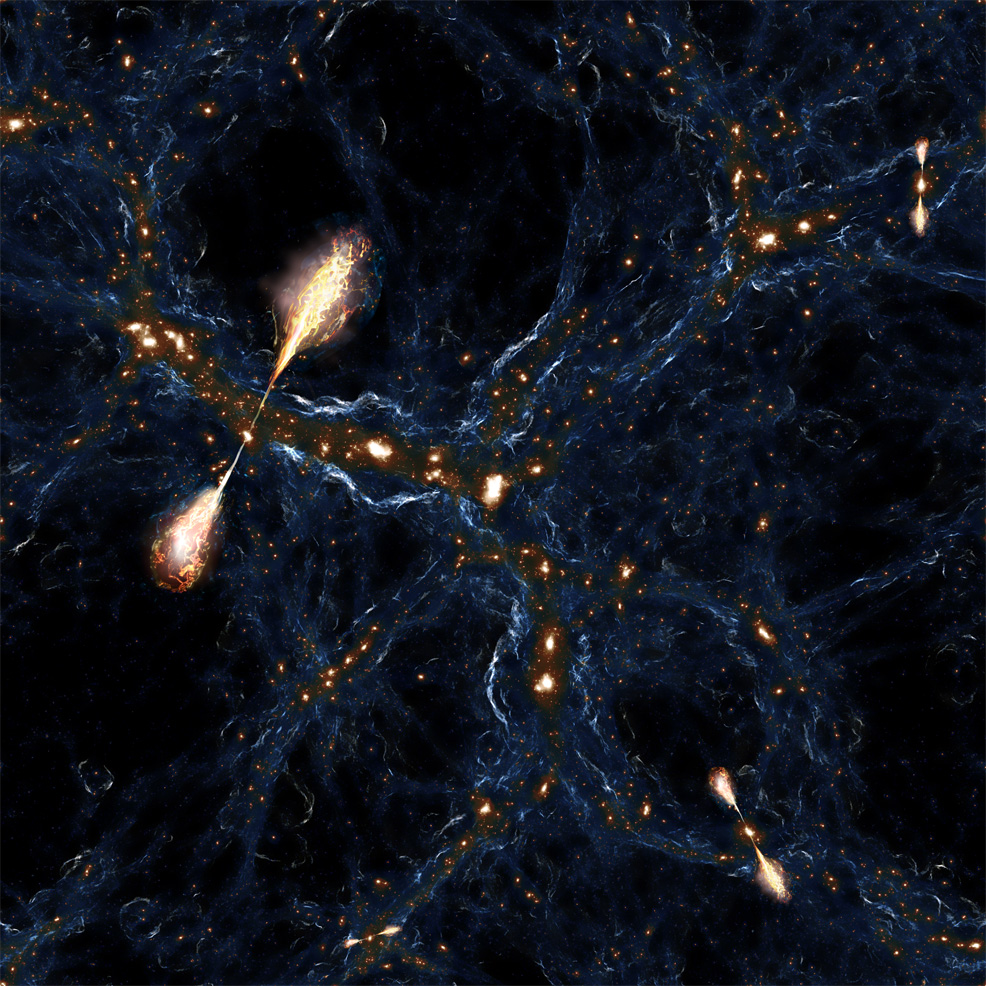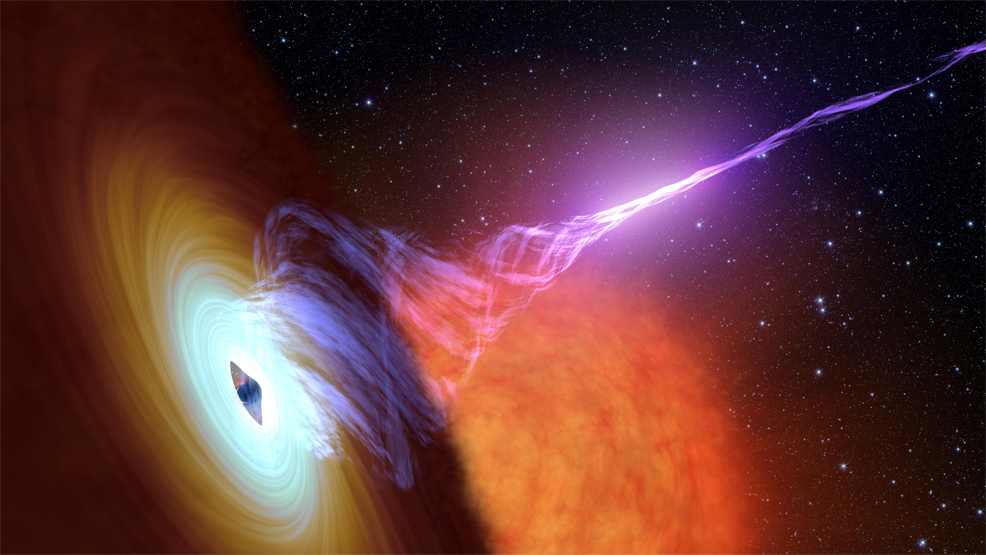
23rd September 2024 Largest black hole jets ever seen are 23 million light‑years in length The largest known pair of astrophysical jets has been discovered within a radio galaxy called Porphyrion, extending 23 million light-years from end to end.
From the smallest grains of cosmic dust to the largest known galaxies, the universe is a place of staggering diversity in size and scale. Our Sun, while vast by human standards with a diameter of 1.4 million kilometres, pales in comparison to some of the largest stars. WOH G64, for example, is a red supergiant about 1,700 times the diameter of our Sun. If placed at the centre of our Solar System, its outer edge would stretch beyond the orbit of Jupiter. But even these celestial giants are reduced to near-nothingness when compared to the immense structures lurking in deep space. Among the most awe-inspiring are jets of matter ejected from supermassive black holes. These can sometimes extend across significant portions of intergalactic space. Recently, astronomers observed a pair of these jets, so unimaginably huge that they span a colossal 23 million light-years. This is more than half the width of a cosmic void – vast, empty regions forming the inside of honeycomb-like structures, each linking together galactic superclusters. Emerging from a distant galaxy called Porphyrion, these newly-seen jets are the largest ever recorded, and provide a glimpse into the ancient forces, shaped over eons, at play in the universe.
"This pair is not just the size of a solar system, or a Milky Way; we are talking about 140 Milky Way diameters in total," explains Martijn Oei, a Caltech postdoctoral scholar and lead author of a Nature paper on the findings. "The Milky Way would be a little dot in these two giant eruptions." He and his colleagues used the LOFAR (LOw Frequency ARray) radio telescope – a network of dishes spread across Europe – combined with measurements from the Giant Meterwave Radio Telescope in India, an instrument at the Kitt Peak Observatory in Arizona, and the Keck Observatory in Hawaii, to pinpoint the source of the jets. They calculated that Porphyrion is 7.5 billion light-years from Earth and the host galaxy is 10 times more massive than our own. "Up until now, these giant jet systems appeared to be a phenomenon of the recent universe," explains Oei. "If distant jets like these can reach the scale of the cosmic web, then every place in the universe may have been affected by black hole activity at some point in cosmic time."
How jets of this magnitude can reach so far beyond their host galaxies without destabilising is unclear. One theory is that an unusually long-lived accretion event around the central, supermassive black hole is responsible. A steady supply of material feeding into the black hole could keep it active for over a billion years, enabling the jets to maintain their direction and power over such vast distances. At 23 million light-years, Porphyrion has now dwarfed Alcyoneus, the previous record holder at 16 million light-years. As a next step, Oei wants to better understand how these megastructures influence their surroundings. The jets spread cosmic rays, heat, heavy atoms, and magnetic fields throughout the space between galaxies. Oei is particularly interested in finding out the extent to which giant jets spread magnetism and shape the cosmic web. The team also believes there are many more out there, possibly numbering in the hundreds of thousands. "There absolutely could be other jets of equal size or even larger waiting to be found," said Martin Hardcastle, second author of the study and a professor of astrophysics at the University of Hertfordshire in England. "We don't know of anything in principle limiting the size of these objects, and we have only surveyed about an eighth of the sky with LOFAR so far. It and other telescopes, such as the forthcoming Square Kilometre Array, will almost certainly find something larger before we are done. "For me, the interest of these surveys is in getting the whole population, from which we can work out the implications for the active lifetime of all black holes throughout cosmic time." "We may be looking at the tip of the iceberg," adds Oei. "Our LOFAR survey only covered 15% of the sky. And most of these giant jets are likely difficult to spot, so we believe there are many more of these behemoths out there."
Comments »
If you enjoyed this article, please consider sharing it:
|
||||||









